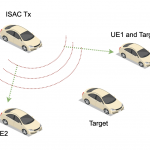
We research on the following topics, but not limited to them. Advances in wireless communication and sensing technologies are revolutionizing how information is transmitted, processed, and utilized across diverse applications. With the increasing demand for efficient, reliable, and intelligent systems, several cutting-edge research areas have emerged as critical pillars in the development of next-generation wireless networks and sensing platforms. Below is an overview of key focus areas driving innovation in this domain:
Integrated Sensing and Communication (ISAC)
Integrated Sensing and Communication represents the convergence of wireless communication and sensing capabilities within a unified framework. By enabling seamless sharing of spectrum and hardware resources, ISAC optimizes system efficiency and paves the way for applications such as autonomous vehicles, smart cities, and advanced healthcare systems.
Massive MIMO Systems
Massive Multiple-Input Multiple-Output (MIMO) systems leverage large-scale antenna arrays to significantly enhance wireless network capacity, energy efficiency, and signal reliability. This technology underpins the success of 5G and beyond, addressing the ever-growing demand for high-speed connectivity in dense urban and industrial environments.
Deep Learning for Wireless Communication and Sensing
Deep learning techniques are transforming wireless communication and sensing by enabling intelligent signal processing, channel estimation, and anomaly detection. The integration of neural networks allows systems to adapt dynamically to complex environments, enhancing performance in scenarios such as cognitive radio and adaptive beamforming.
Antenna and Array Design and Measurements
Advanced antenna and array designs are crucial for achieving high-performance wireless systems. Innovations in this area focus on developing compact, multi-band, and high-gain antennas tailored for emerging applications like satellite communication, mmWave networks, and wearable devices. Precision measurement techniques are equally vital for validating and optimizing these designs.
RF Energy Harvesting
Radio Frequency (RF) energy harvesting addresses the growing need for sustainable and self-powered wireless devices. By converting ambient RF signals into usable energy, this technology supports the development of battery-free sensors and IoT devices, driving the vision of pervasive and green wireless networks.
Internet of Things (IoT) and Machine Learning
The synergy between IoT and machine learning is reshaping industries by enabling data-driven decision-making and predictive analytics. Machine learning models process massive IoT-generated datasets to optimize resource management, enhance security, and improve user experiences in smart homes, healthcare, and industrial automation.
RFIC Design and Modeling
Radio Frequency Integrated Circuit (RFIC) design and modeling are at the heart of modern wireless communication systems. This area focuses on developing compact, high-performance circuits for applications ranging from mmWave 5G networks to low-power IoT devices. Accurate modeling techniques are crucial for ensuring reliable and efficient circuit operation.
These research areas collectively address the challenges of modern wireless communication and sensing, offering innovative solutions that redefine connectivity, efficiency, and intelligence in an increasingly connected world.
- Integrated Sensing and Communication
- Massive MIMO systems
- Deep Learning for Wireless Communication and Sensing
- Antenna and Array Design and Measurements
- RF Energy Harvesting
- Internet of Things and Machine Learning
- RFIC Design and Modeling
